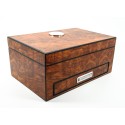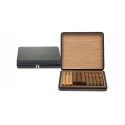If a cigar ever tasted flat, bitter, or released a sour and wispy aroma, improper storage was likely the cause. Cigars react quickly to the environment.
Too much heat dries them. Cold air stiffens the leaves. Moisture leads to mold. Dryness kills flavor.
No room in a home or lounge offers stable enough conditions without assistance. That is why the humidor exists.
Cigars require a sealed, balanced environment to stay fresh, aromatic, and smokable. Without that, the moment you light a cigar, it can burn unevenly or taste bitter. A humidor creates that balance.
It holds cigars at the correct humidity and temperature, preventing damage, loss of aroma, and poor combustion.
Without that protection, cigars lose flavor, crack easily, or grow mold.
The solution is simple. Learn how a humidor works, what it looks like, and how it protects cigars long term.
All key benefits, working parts, and storage techniques are covered in the guide below.
Why a Humidor Is Essential for Proper Cigar Storage
View this post on Instagram
Cigars are fragile products shaped by time, climate, and care. Without controlled storage, their quality quickly fades. A humidor prevents those issues by offering a stable environment where temperature and humidity stay within the precise range cigars require.
The primary role of a humidor is to keep cigars fresh and smoke-ready by replicating the natural climate where tobacco matures best.
Fluctuations in indoor air, even in a closed drawer or cabinet, can crack the wrapper, flatten the aroma, or allow mold to form.
Even short exposure to dry air strips the essential oils that create flavor depth. A humidor blocks that risk.
What Makes the Humidor Necessary
-
Air protection: Cigars absorb external odors and moisture. A humidor prevents both.
-
Humidity balance: Ideal humidity sits between 68% and 75%. Below that, cigars dry out. Above that, mold forms.
-
Flavor integrity: Without stable conditions, the wrapper leaf shrivels and loses aroma.
-
Smoke quality: Cracked or brittle cigars burn unevenly or clog during the draw.
What Happens Without a Humidor
Cigars left in normal room conditions lose their smoking value within days. The binder leaf separates, the filler dries unevenly, and the flavor turns harsh. Even premium cigars become unsmokable without proper care.
No substitute like a drawer, cabinet, or pouch, can replace the performance of a sealed humidor built for cigar preservation.
What a Humidor Looks Like and How Each Part Works
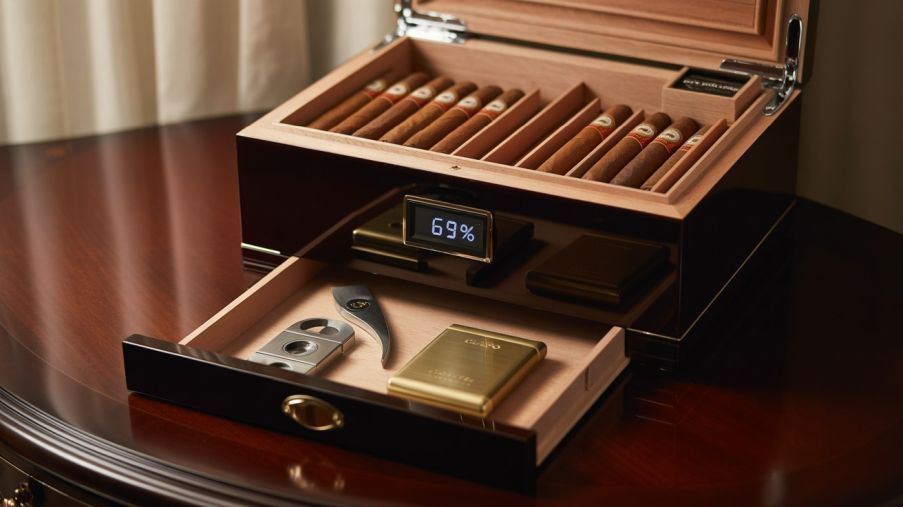
Every humidor has a purpose-built structure designed to preserve cigars at a consistent quality level. It is more than a wooden box.
Each part plays a critical role in shielding cigars from air shifts, moisture spikes, and environmental contamination—especially when paired with the right cigar accessories for preparation and handling
The exterior design varies—some models appear as compact desktop boxes, others as tall cabinets. Regardless of size or material, every humidor follows the same essential layout.
Materials Used
-
Spanish cedar: Most common and ideal for lining. It holds moisture, repels insects, and enhances aroma.
-
Glass or acrylic: Often used for lids or full-body builds. Requires tighter seals.
-
Plexiglass and ceramic: Less common, but offer solid temperature stability in smaller units.
Main Functional Parts
Each humidor includes a set of integrated components that maintain and monitor storage quality.
1. The Container

The core structure must be airtight. When closed, it traps humidity and prevents ambient air from disrupting the interior. A loose lid or poor seal leads to moisture loss and flavor degradation.
2. The Humidifier
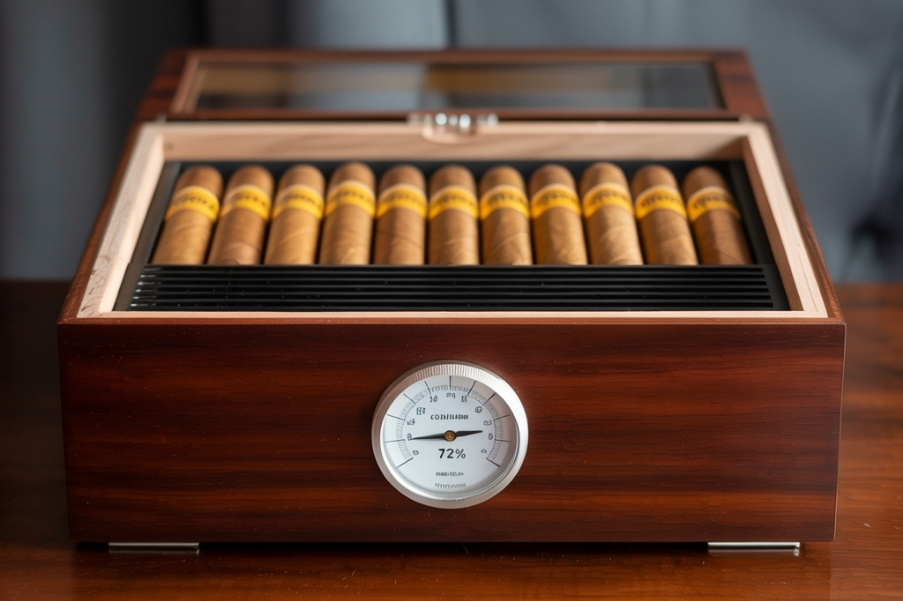
This unit adds moisture to the internal air. It may be:
-
Passive: Gel packs or moisture sponges
-
Active: Electronic modules with precise regulation
Passive systems require manual refill using distilled water or propylene glycol. Active ones use sensors and fans.
3. The Hygrometer and Thermometer
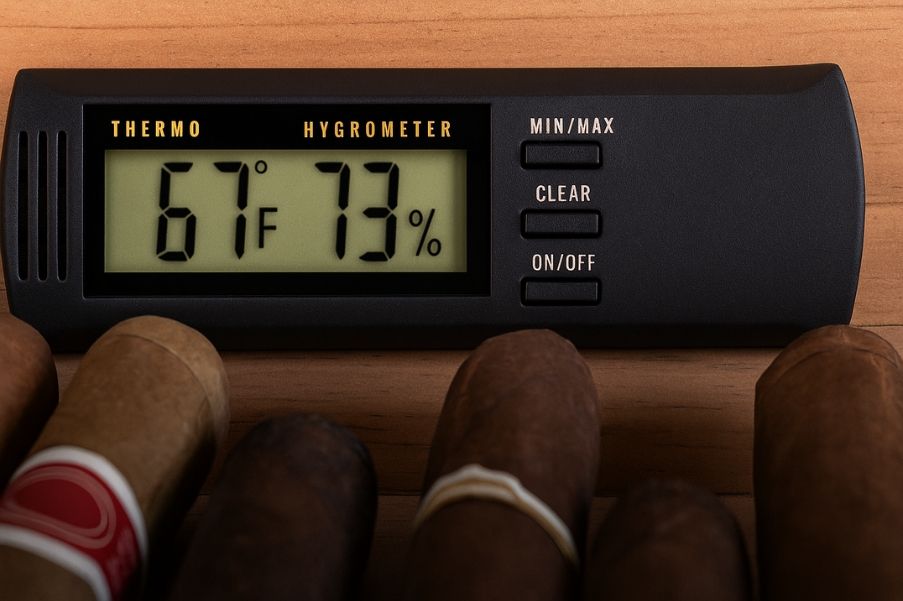
These tools measure internal climate:
-
Hygrometer: Tracks humidity percentage
-
Thermometer: Monitors temperature range (ideally 18 to 21°C)
Both come in digital and analog forms. Digital sensors offer higher accuracy but depend on full internal sealing to stay reliable.
Each part supports a specific balance. When the seal holds, and the readings stay within range, cigars inside maintain ideal moisture, shape, and aroma.
How a Humidor Maintains Ideal Humidity and Temperature
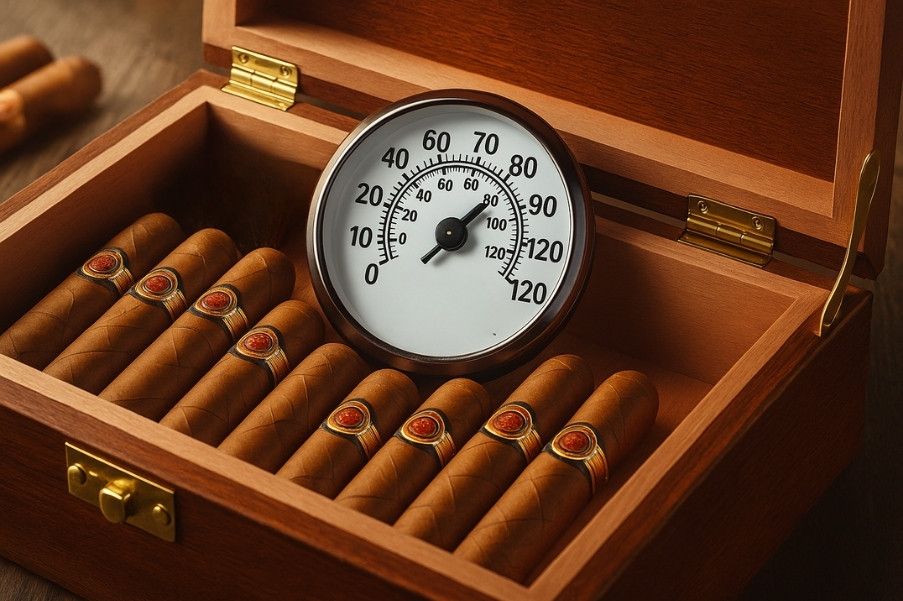
A humidor works by regulating moisture through material absorption and controlled release. Spanish cedar lining acts as a buffer that holds humidity and slowly balances it across the internal space.
Every time the lid opens, humidity dips—but the cedar walls absorb that shift and restore balance within hours.
Humidity control is not guesswork. It is a system built on insulation, evaporation, and natural wood response.
Internal Humidity Range
The ideal humidity for cigars falls between 68% and 75%. That level keeps the wrapper leaf supple, the filler evenly conditioned, and the draw smooth.
-
Below 65%: Cigars dry out and crack
-
Above 75%: Risk of mold, bitter flavor, or uneven burning
-
Between 68–72%: Safest zone for aging and daily smoking
Temperature Stability
Cigars react to heat faster than most realize. Ideal temperature ranges between 18°C and 21°C. Excess heat amplifies humidity, causing cigars to swell and burn unevenly. Cold air reduces aroma and causes hard draws.
Even minor shifts—caused by window placement, sunlight, or heating vents—can throw off balance. The humidor’s purpose is to prevent those fluctuations.
How Materials Support Climate Control
-
Spanish cedar: Regulates air and holds aroma
-
Glass lids: Require reinforced seals to avoid condensation
-
Digital hygrometers: Detect rapid changes faster than analog ones
Humidity inside never stays fixed without maintenance, but with proper setup, the humidor stabilizes within a few days and holds its environment steady.
Step-by-Step Instructions for First-Time Setup
A new humidor must be seasoned before cigars go inside. Placing cigars in an unprepared humidor will lead to moisture imbalance, rapid drying, or even aroma contamination.
Proper setup ensures the internal environment reaches stable humidity before storage begins.
Follow each step precisely to prepare your humidor correctly.
Step 1: Wipe the Interior with Distilled Water
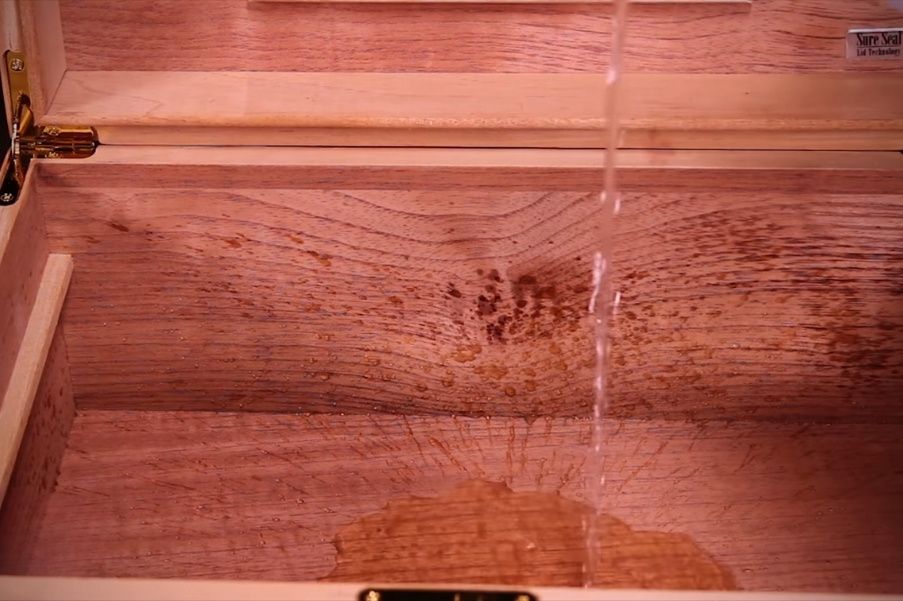
Use a clean sponge dampened with distilled water only. Gently wipe the inner walls, lid, and base. The goal is to moisten—not soak—the cedar lining. This activates the wood’s ability to hold humidity.
Avoid tap water. Minerals and chlorine leave residues that affect aroma and long-term storage quality.
Step 2: Insert the Humidifier
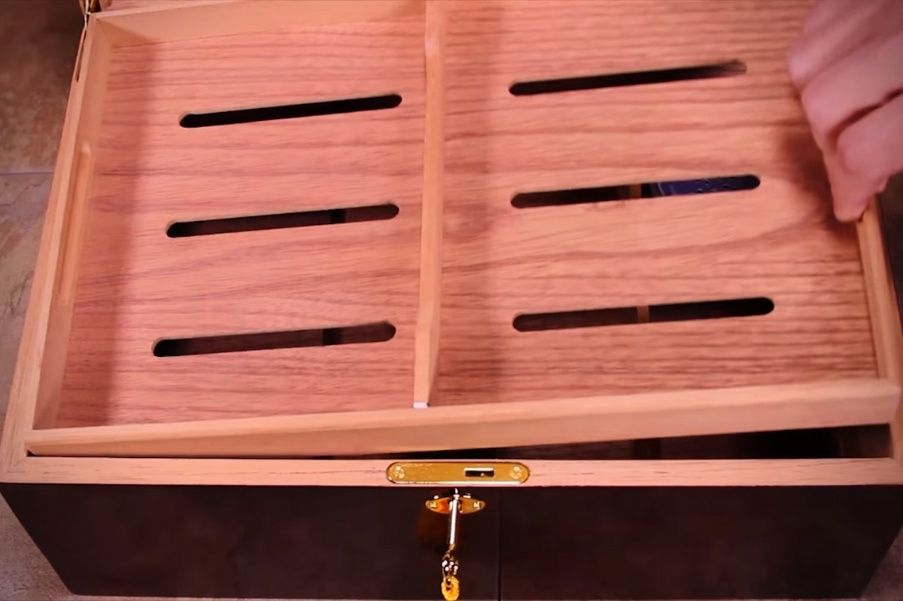
Add your humidifier pack, gel jar, or sponge container. Make sure it stays centered or placed where airflow is not blocked.
If using a passive system:
-
Fill it with distilled water or 50/50 propylene glycol solution
-
Let it sit for at least 24 to 48 hours before adding cigars
If using an active system:
-
Power it on
-
Set the humidity target between 65% and 68%
-
Let it stabilize for 2 days
Step 3: Check Hygrometer Readings
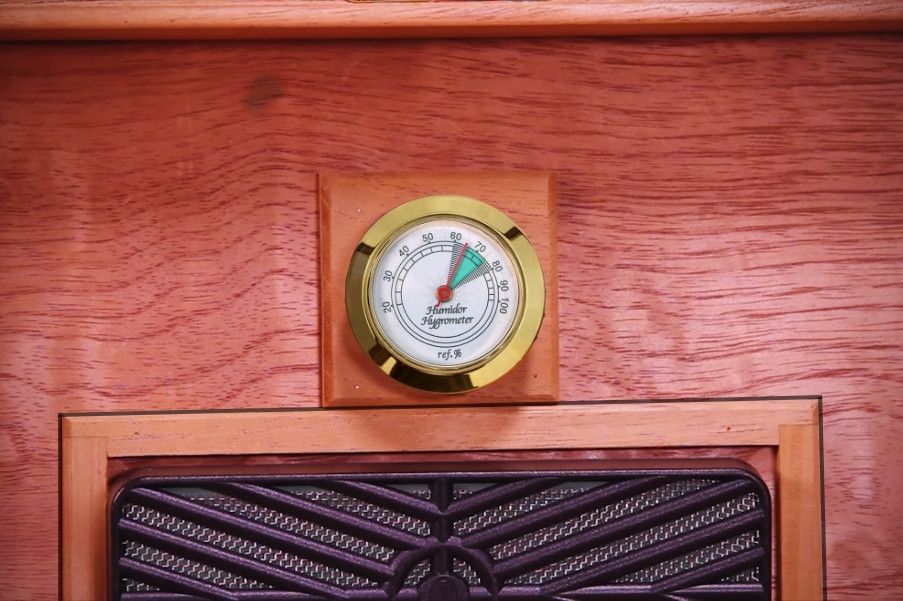
Once the interior feels stable, check your hygrometer. It should read between 65% and 68%. If it shows under 59%, wait longer before inserting cigars. If over 75%, open the lid briefly and allow a minor reset.
Digital hygrometers respond more quickly. Analog models may lag by several hours.
Step 4: Insert Cigars When Ready
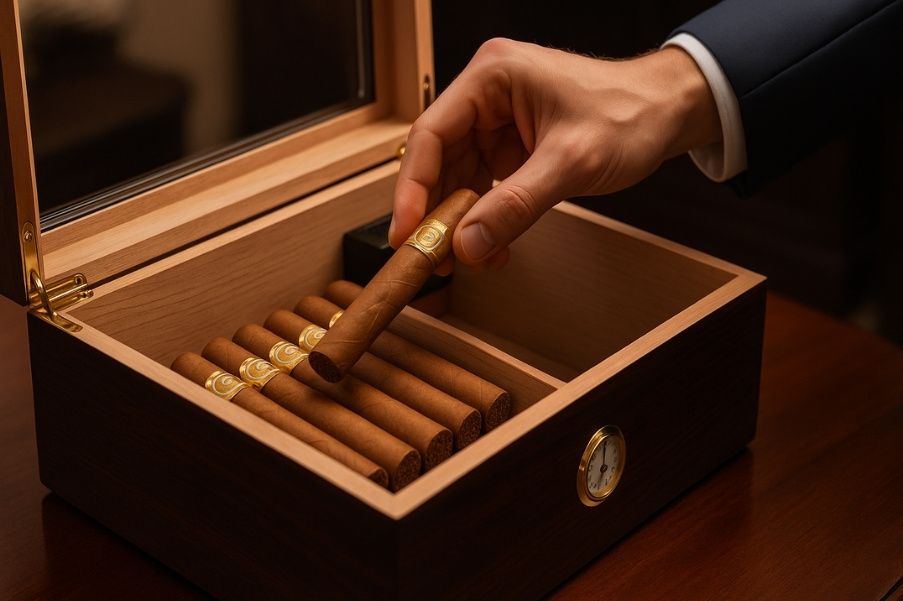
Only insert cigars after the humidor shows stable humidity for at least 24 hours. Lay them in rows with small spacing to allow airflow.
Never overfill the humidor, and keep tools for cigar cutting nearby to prepare each smoke properly. Crowding blocks circulation and causes uneven conditioning.
Main Benefits of Using a Humidor for Cigars
A humidor is not a luxury item. It is a requirement for anyone who values cigar quality, aroma, and texture. Without it, even premium cigars lose their essence.
Flavor fades. The wrapper leaves crack. Mold spreads through batches stored in poor conditions.
Every key benefit of using a humidor connects directly to the smoking experience.
1. Freshness That Holds for Weeks or Years
Cigars stored inside a humidor remain fresh, supple, and ready to smoke. Exposure to open air drains moisture in days. That loss leads to tight draws, fast burns, and dry flavor. A humidor keeps the leaf hydrated and the filler evenly conditioned.
A well-maintained unit guarantees cigars feel firm yet soft and never crumble under pressure.
2. Storage Built for Time
For collectors or long-term smokers, cigars often sit for months—or years. During that time, minor shifts in room humidity can destroy a full box. A humidor allows cigars to age properly, preserving their oils and structure.
Lowering humidity slightly (around 65%) supports longer storage with minimal fermentation.
3. Aroma Locked Inside
The signature scent of any cigar lives in its natural oils. When cigars dry out, those oils evaporate. That aroma cannot be recovered. A humidor protects it by controlling how moisture interacts with the wrapper and binder.
Spanish cedar even adds subtle flavor notes and further preserves the tobacco’s native character.
How to Store Cigars Long Term Without Losing Aroma or Quality
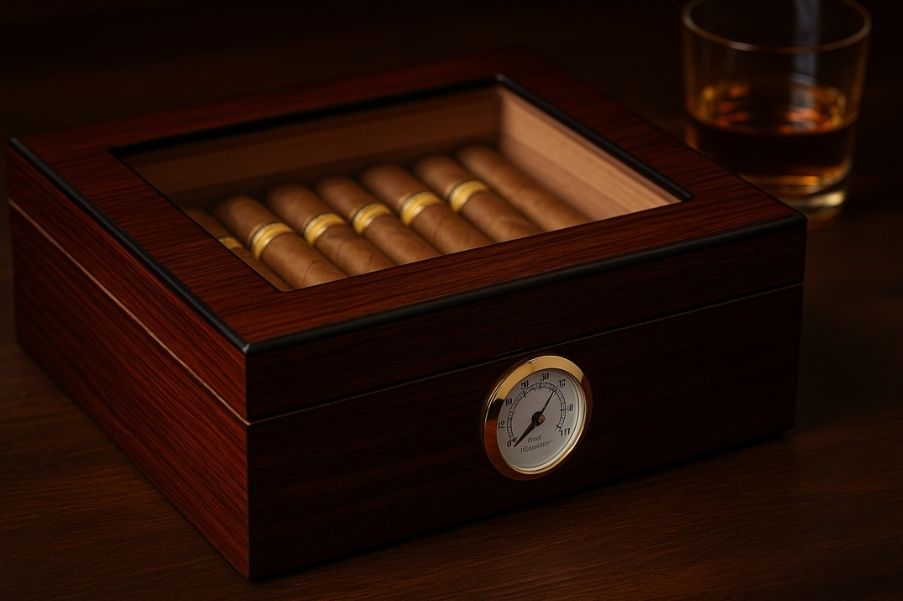
Long-term cigar storage demands more than occasional attention. Small errors in humidity or temperature control compound over time. That leads to cracked wrappers, bitter pulls, or full batches lost to mold. A humidor prevents all of it—if used correctly.
The key is consistency. Once conditions stabilize, the humidor becomes a trusted space where cigars stay fresh for months or years.
Best Practices for Long-Term Storage
-
Maintain lower humidity for aging: Keep it around 65% to slow fermentation and reduce over-softening.
-
Avoid direct sunlight or vents: External heat causes humidity spikes. Place your humidor in a cool, shaded area.
-
Separate flavored cigars: Flavored types release aromas that can bleed into premium blends. Always store them apart.
-
Check seals monthly: Even a small leak ruins internal balance. Run a dollar bill test to confirm tight closure.
-
Rotate cigars every few weeks: This ensures even exposure and avoids one side drying faster than the other.
When to Adjust Storage Conditions
- If storing freshly rolled cigars, maintain humidity between 65% and 69%
- If storing aged or vintage cigars, reduce humidity slightly for stability
- For frequent smokers, aim for quick-access placement without overexposing the interior
Each cigar inside a humidor holds its flavor because the air around it stays right. Aging happens slowly. Aroma remains intact. Mold stays out.
The Bottom Line
A humidor is not optional for anyone serious about cigars. It protects every element that defines cigar quality—flavor, aroma, texture, and burn performance. Without a controlled environment, cigars lose their character, become brittle, or spoil entirely.
With proper setup, consistent monitoring, and the right materials, a humidor transforms into a long-term storage solution that preserves every cigar as it was meant to be enjoyed. Every fresh draw, balanced burn, and rich aroma begins with proper storage. That begins with a humidor.






